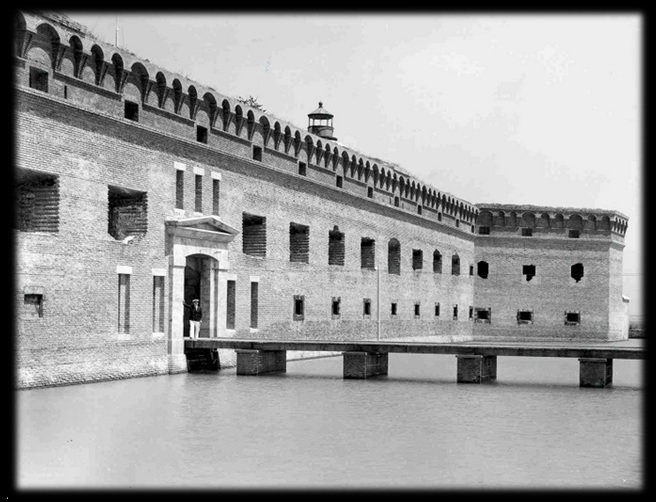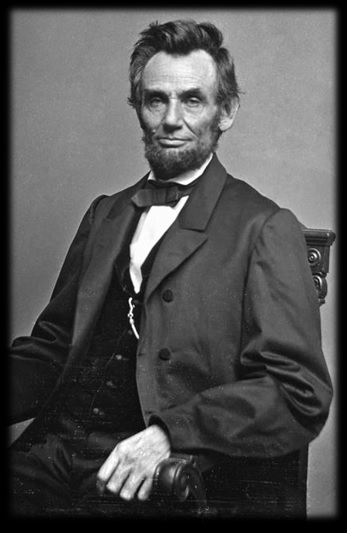
The nation is at war – collectively fighting the likes of an enemy never before seen. To protect the populace, drastic measures are sometimes necessary, even when not universally supported by the very people they’re intended to protect.
Unlike wars previous, where the aggressor was a recognized foreign nation, this undeclared war had some American citizens aggressively working towards the demise of the United States.
In response, the president used executive powers to suspend parts of the U.S. Constitution. Arguing it was necessary and legal to act without Congressional approval, the president authorized the detention of enemy combatants without judicial review.
Even with the very survival of our nation at stake, not everyone was in agreement with one person wielding such power. Keeping in line with the president, Republicans mostly supported him. Democrats were mostly opposed. Public demonstrations erupted. Civil libertarians were outraged.
Even courts rendered their opinion. The Chief Justice of the U.S. Supreme Court opined, “Article I, section 9 of the United States Constitution reserves to Congress the power to suspend habeas corpus and thus the president's suspension was invalid.”
In response, the president declared the court's ruling invalid and it was ignored.
Never before had a president exercised such unilateral power. The media labeled him a "power hungry madman" and even an idiot not to be trusted. If the president could incarcerate someone he designated an enemy of the state, what was next? Could subjugation of every American be just around the corner?
The president was unaffected by the criticism. A strong man, both mentally and physically, he wasn’t the type to back down from a fight.
As important civil liberties were debated, the federal government was full speed ahead with its detentions.
To house the enemy combatants, a military prison was established on a Caribbean Island. Some prisoners were afforded a military tribunal however most were held indefinitely without the knowledge of a civilian court.
Strategically, it was the ideal situation. Less than 100 miles from Key West, the base was close enough for resupply but not on the continental United States thus away from the prying eyes of the media.
At its height the secret prison held 527 men.
While the president’s war time decisions were controversial, they didn’t hurt his reelection and he easily cruised to a second term.
Then came the unthinkable. On April 14, 1865, at 10:13 pm, John Wilkes Booth snuck into the unguarded state box of the Ford Theatre and shot President Abraham Lincoln in the back of the head. The president languished in coma for nine hours before succumbing to his injuries.
With Civil War having ended less than a week earlier, and President Andrew Johnson now in the White House, the government turned its full energy towards bringing the killer(s) of President Lincoln to justice.
After 12 days on the run, Booth was cornered in a barn in a rural northern Virginia barn. He was shot dead by Union soldier Boston Corbett.
Other conspirators were soon arrested. Four were returned to Washington D.C. and hung. Four others were sent north to a New York state prison. Then, in the middle of the night - Ned Spangler, Dr. Samuel Mudd, Samuel Arnold and Michael O’Laughlen - were pulled from their cells and thrown on a ship. As the men could see land on their right they immediately knew were headed south but didn’t know where.
The ship eventually docked at Fort Jefferson – a 47 acre brick fortress located on Dry Tortugas Island 68 miles west of Key West Florida.
Despite lacking a source for fresh water, the government had originally designated the location as a lighthouse in 1826. After realizing its lack of potential for escapes, construction of an all brick, six sided prison began in 1846 and is named for the 3rd president, Thomas Jefferson.
In addition to operating a penitentiary, during the Civil War, the federal government also had Union warships use the harbor in a campaign to blockade Southern shipping.
Construction of the massive prison fort was still under way when Dr. Mudd and his fellow prisoners arrived. It continued throughout the time they were imprisoned there and for several years thereafter. It was never completely finished.
Conditions on the island were horrible and not just for the prisoners. Guards had it almost as bad.
Not surprisingly, maintaining a supply of fresh water was an issue. The fort was originally designed with an innovative system of sand-filled columns placed at regular intervals within the inner walls. The columns were intended to filter rainwater into a series of underground chambers however the enormous weight of the outer walls caused cracks and allowed seawater to seep in and contaminate the fresh water supply.
As a prisoner, Dr. Mudd provided much needed medical care during an 1867 yellow fever epidemic that killed a number of prisoners including O'Laughlen.
Despite a previous escape attempt Dr. Mudd was eventually pardoned by President Johnson on March 8, 1869. He was 49 when he died of pneumonia on January 10, 1883. He’s buried in the cemetery of St. Mary's - the same church where he once met with John Wilkes Booth.
By 1888, the military usefulness of Fort Jefferson was behind it so the island was turned over to the Marine Hospital Service for use as a quarantine station.
Today Fort Jefferson is a national park and can be reached by ferry or chartered seaplane from Key West. Visitors typically spend 4 hours on the island which is enough time for a tour, a picnic lunch and a swim. The island has a gift shop but no food is available.
So how does history today judge a president once portrayed as a tyrant? Since 1940 scholars typically rank Abraham Lincoln within the top three of all U.S. Presidents. Will history be as kind to President George W. Bush for establishing the military prison at Guantanamo Bay Cuba shortly after 09/11? Only time will tell.






Today, President Abraham Lincoln is widely regarded as one of the best presidents to ever serve. It wasnt always that way.